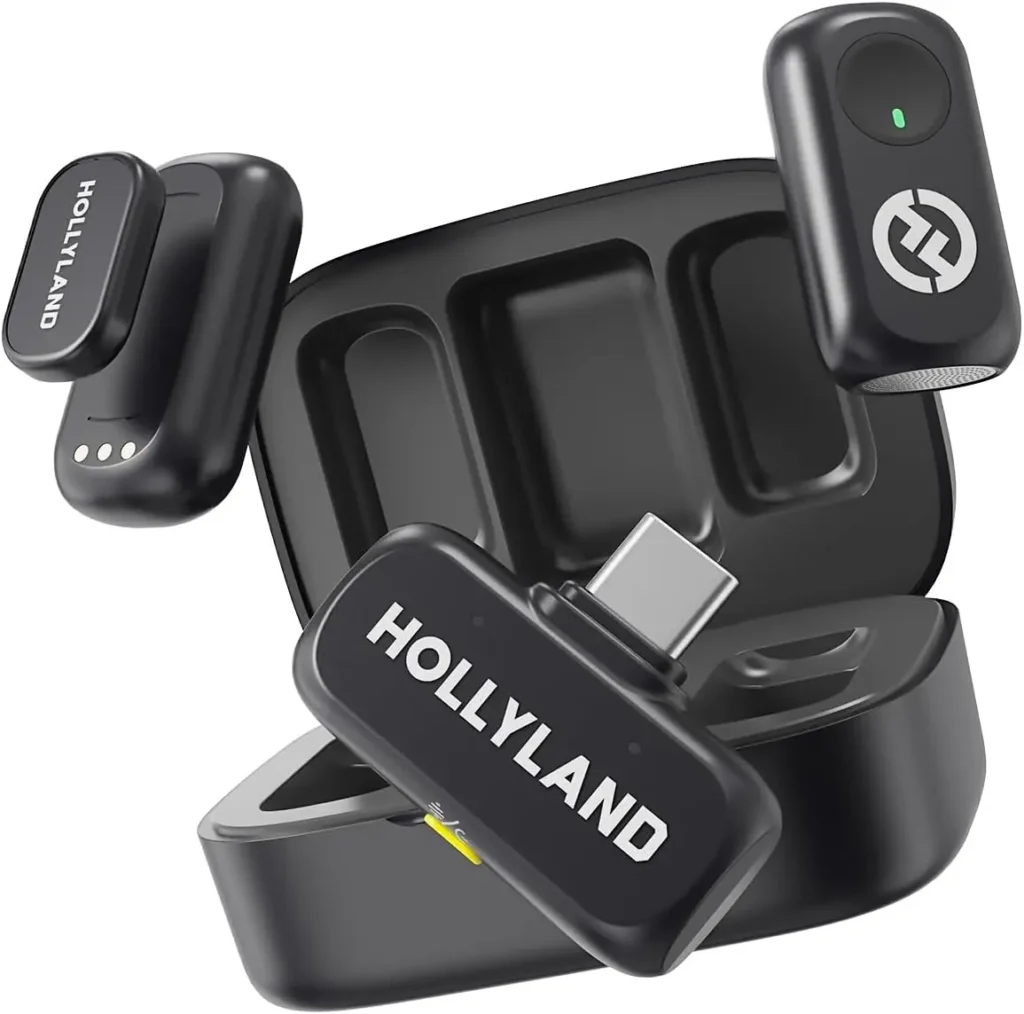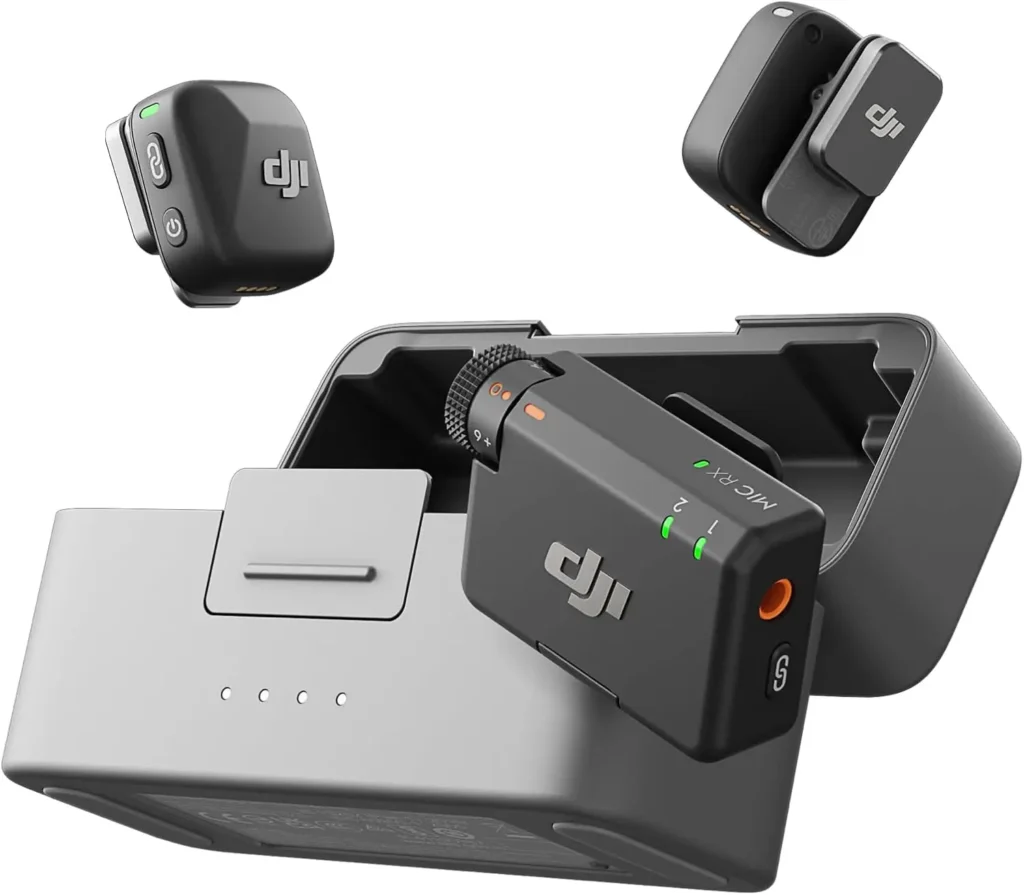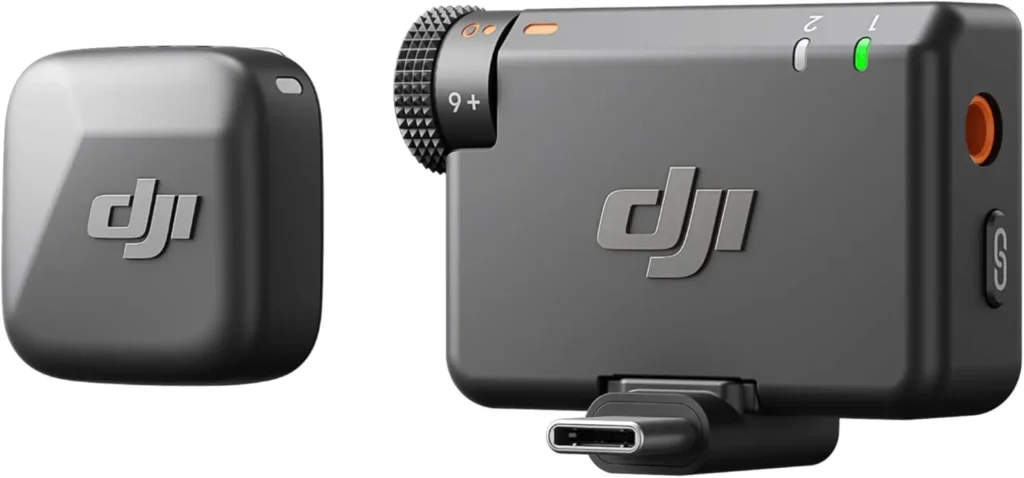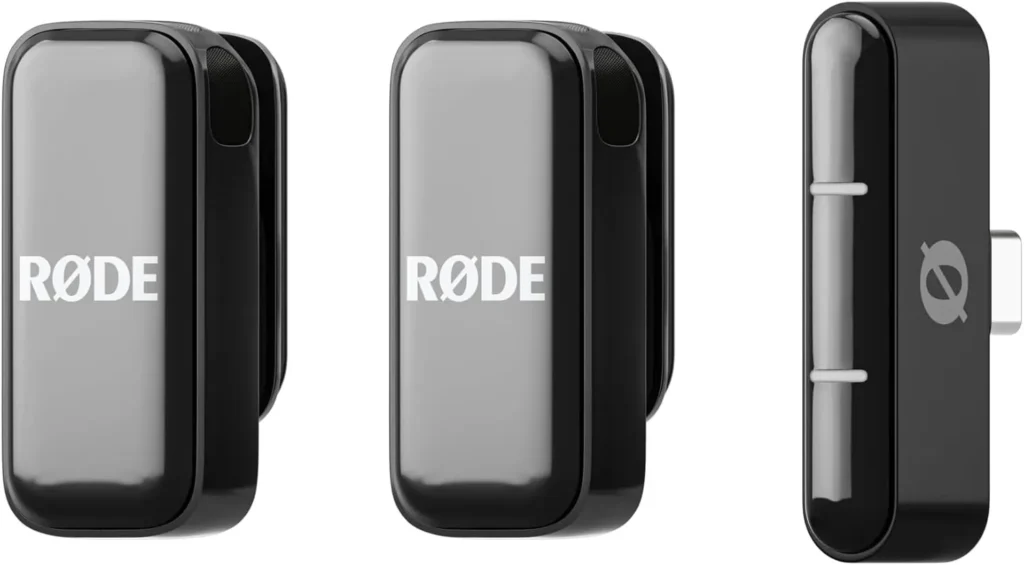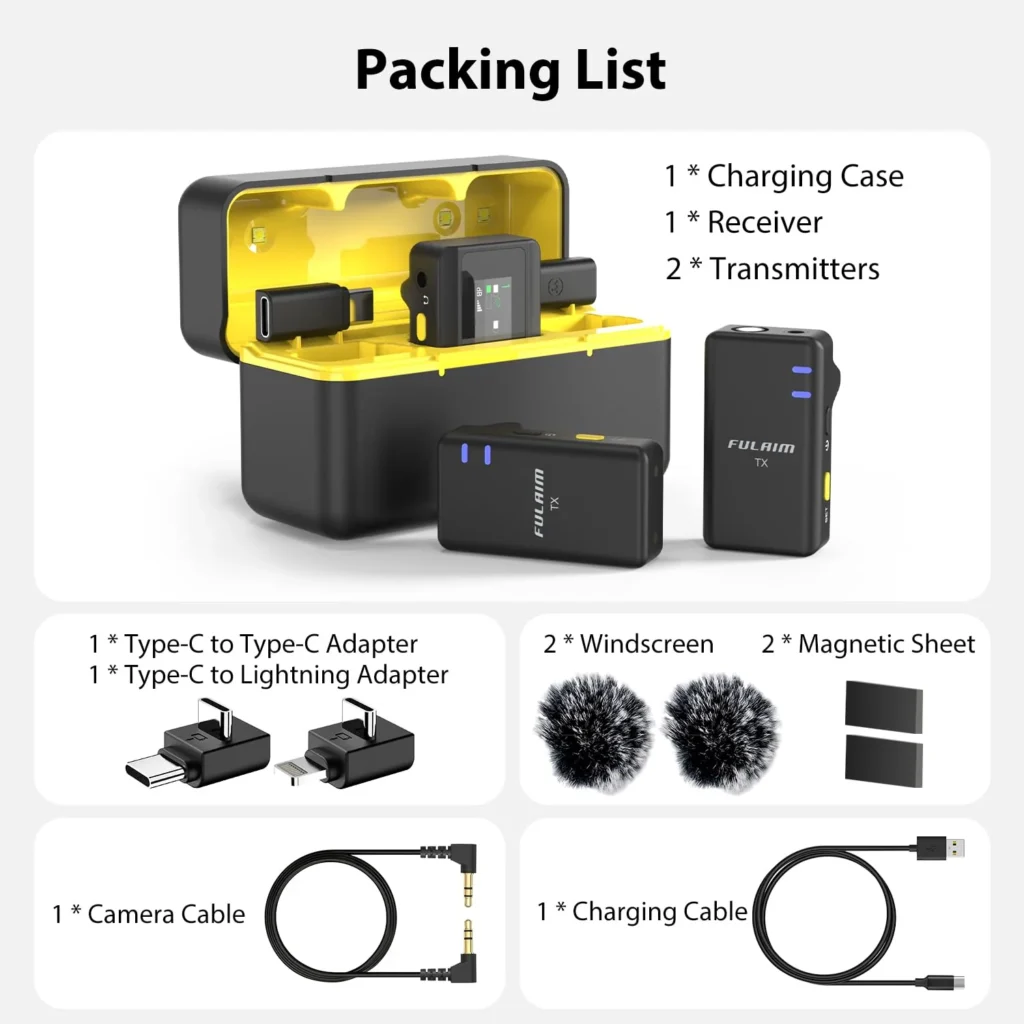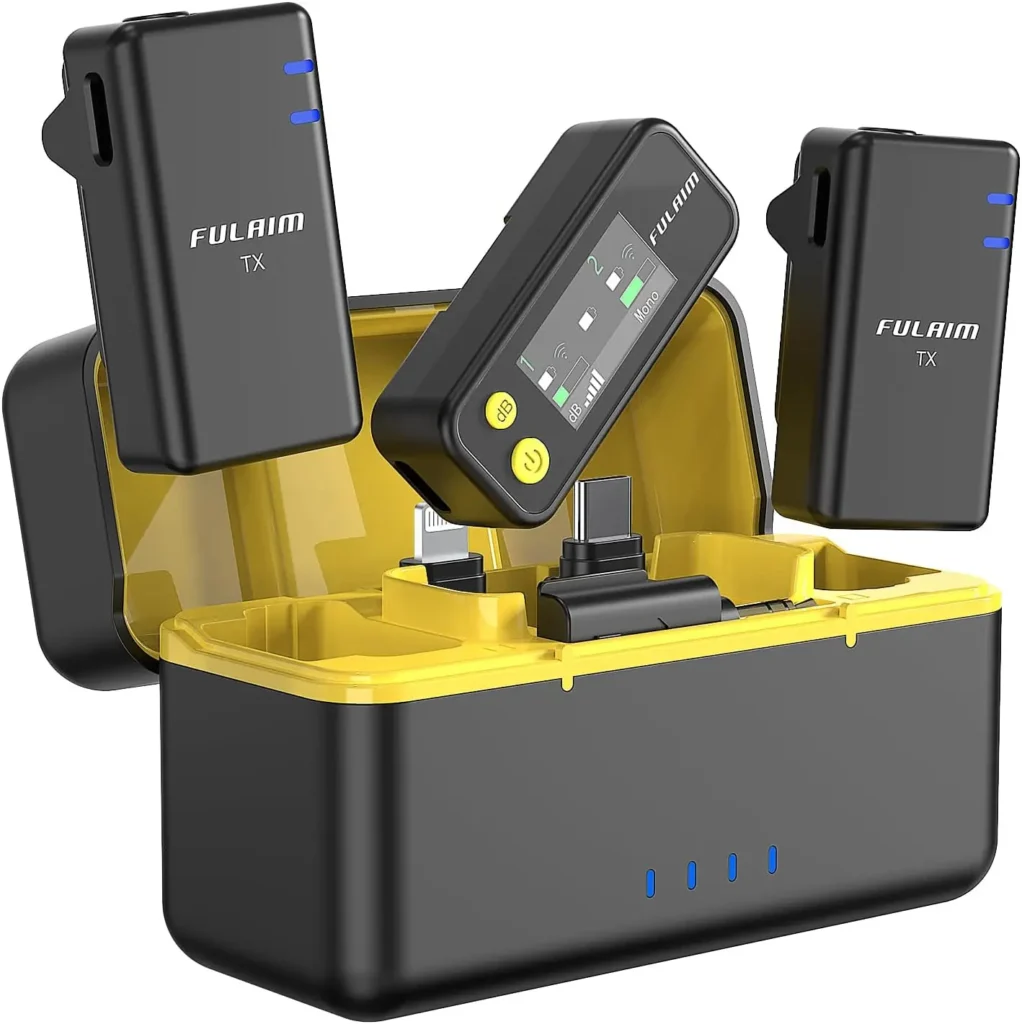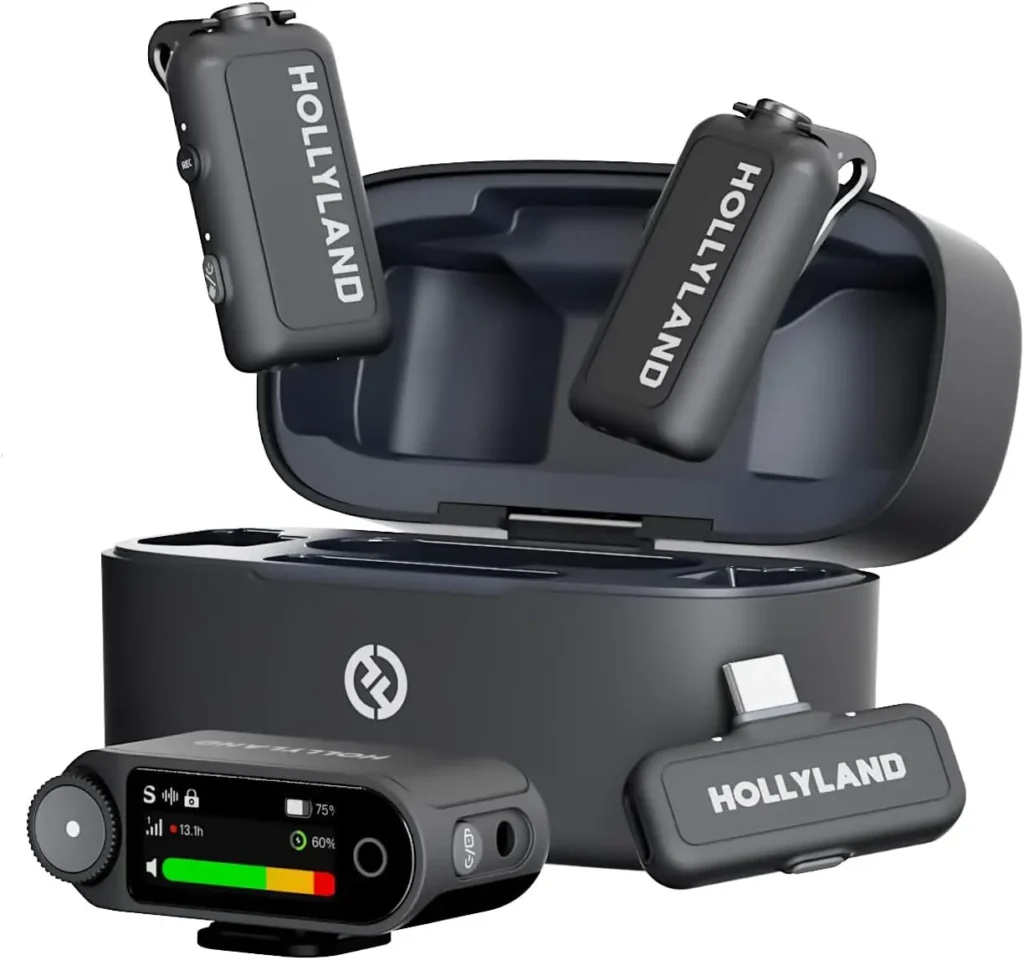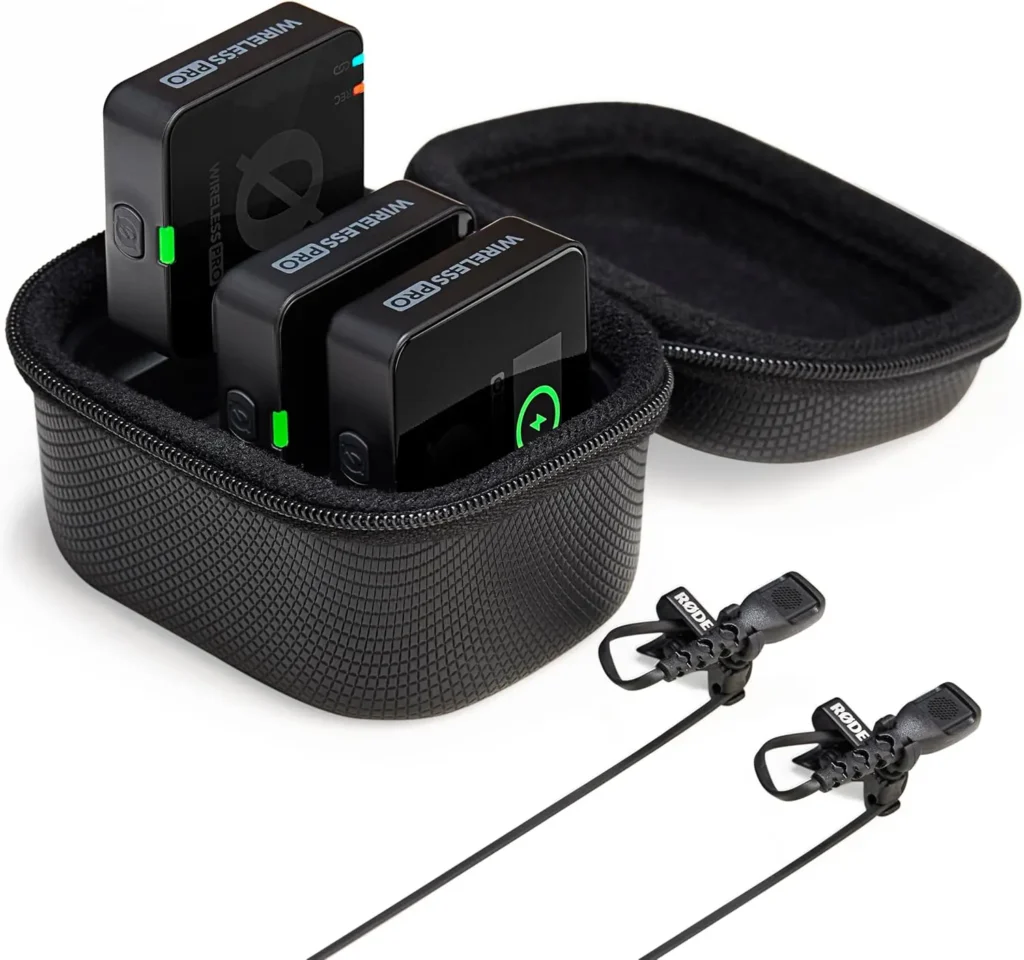Best wireless microphones in comparison - Wireless microphones review - Lavalier microphones
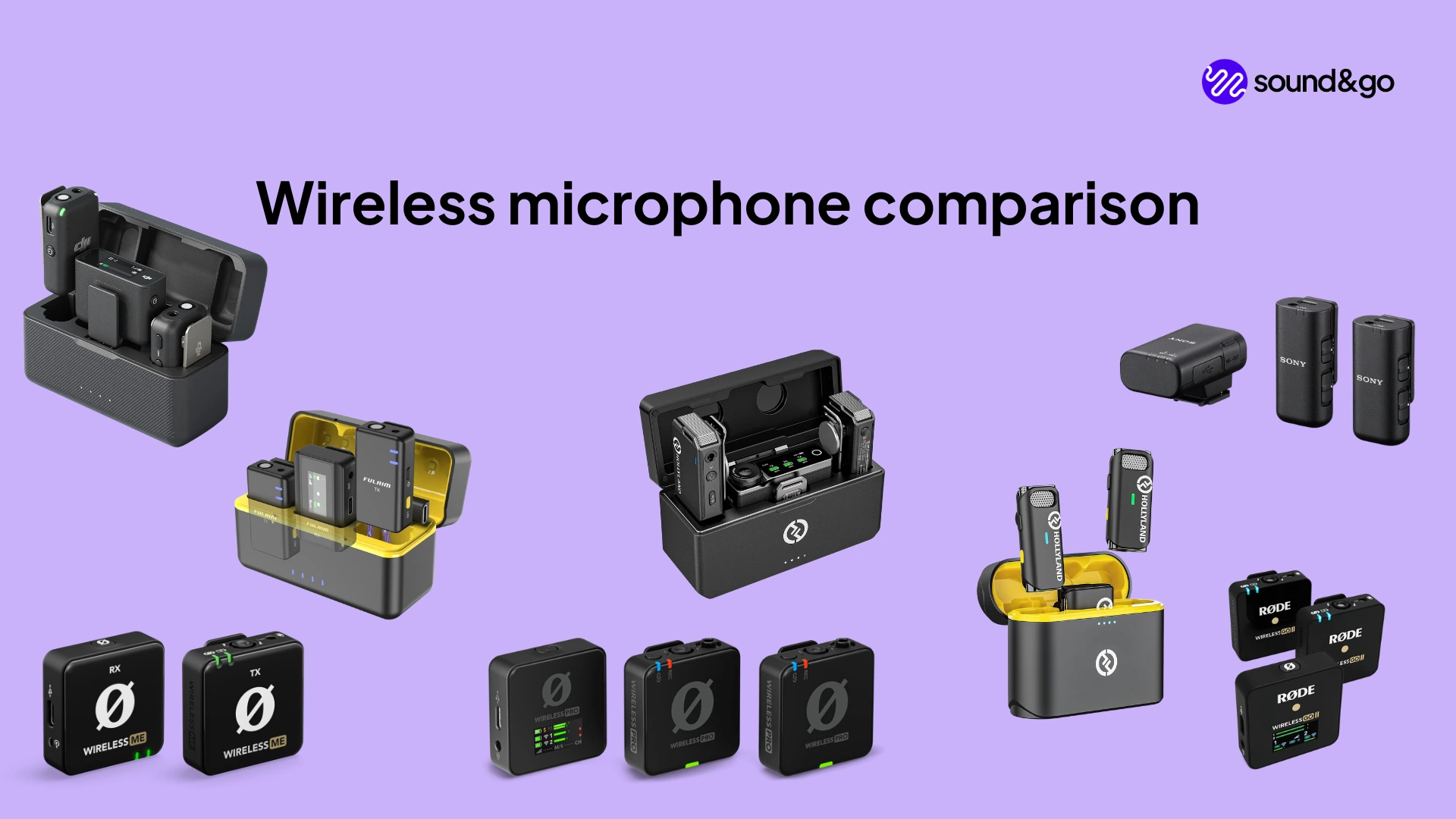
-
 by
Fabian
by
Fabian
- last edited: 09.12.2025
Our winners in the segments:
- Use our affiliate links and support our work.
Our website is free of advertising banners and we state transparently when we have been sent a product. By purchasing from our affiliate partners you do not pay more and support us. Thank you!
The best budget wireless mircrophones
Budget solution with better sound: Hollyland Lark A1
The A1 from Hollyland is a really good solution. It’s a bit larger than the Boya, but the sound quality is much higher. It doesn’t overdrive, is also available with USB-C and Lightning, and is an affordable, simple solution without a lot of bells and whistles.
Nevertheless, it even has a noise-canceling function that works really well and a Lark Sound app that allows you to control the A1 easily. However, the workmanship is not high quality. Both the case and the devices are made of simple plastic. But for the price, that’s really negligible. We think it’s perfect for beginners who only record with their smartphone!
★★★★★
The Hollyland Lark A1 sounds surprisingly good for the price, even the noise canceling is impressive!
★★★★☆
The Lark app on your smartphone is really great! Make sure you use the right connection. Cameras are not compatible.
★★★★☆
The Lark A1 doesn't look particularly high-quality; everything is made of plastic. BUT: Considering the price and other performance aspects, that's fine.
DJI Mic Mini 1+1: Just one microphone, but high quality and affordable!
The Mic Mini is a budget solution that really stands out! With noise canceling, smartphone and camera compatibility, and really good sound, it’s not only impressive as a package deal, but also as a 1RX+1TX solution. You could even expand it if you need a second transmitter later on. If you need two transmitters right away, it’s definitely worth buying the product below, because then you’ll also get the charging case included in the delivery. The case comes in handy to charge and store everything nicely.
★★★★★
Excellent sound, both for smartphones and cameras!
★★★★☆
Unfortunately, users have to purchase a Lightning adapter for $19! Camera and USB-C compatibility is provided.
★★★★★
The DJI Mic Mini is definitely higher quality than other microphones in this budget price range.
Mini-Budget Solution: Boya "Boyamini"
Since we have relatively few affordable models on this list, we have included this microphone. We were sent the Boyamini and were allowed to keep it, but to be honest, we will probably give it away. It is a truly poor-quality microphone because it overmodulates/clips when you speak very loudly, it is noisy, and it simply does not feel like a high-quality product. We would advise against budget microphones unless you really can’t afford anything else!
There is a USB-C version and a Lightning version, or you can buy the more expensive combo version with both adapters. But as we said: we only recommend this microphone if everything else is beyond your budget!
★★☆☆☆
Unfortunately, the Boyamini really doesn't score well in terms of sound quality, as it quickly overloads and then recordings sound bad.
★★★★☆
Connectivity is okay, cameras are not supported, microphones connect very quickly.
★★★☆☆
There are also some drawbacks here, as it feels cheap and the windshields are not high quality. On the positive side, it is really very small.
DJI Mic Mini: The best overall package
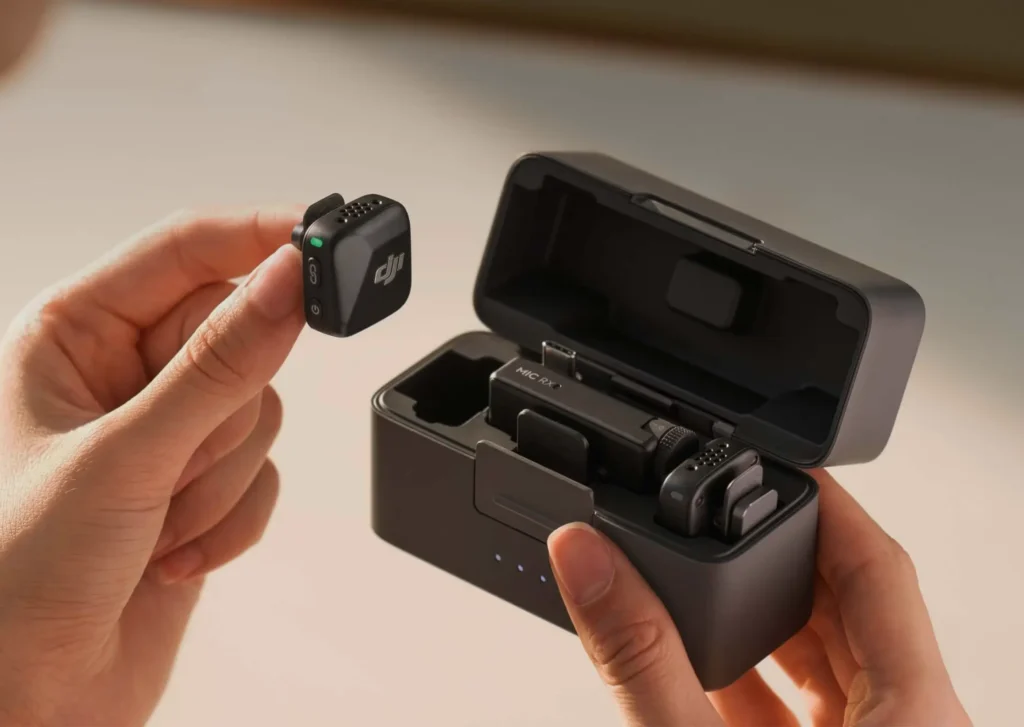
The DJI once again impresses with its quality. Above all, the overall package simply stands out positively. You have really small transmitters, a charging case and a bag for all the accessories. The case is robust and everything feels high quality.
You also have the option of connecting the receiver in ONE device via USB-C, Lightning (although this costs $19 and is not included) and via a jack (i.e. to the camera). No one in the mini segment can do that.
The sound is also absolutely great, making the DJI Mic Mini the winner in the mini microphone segment!
★★★★★
Not much worse than the Wireless Mirco, very balanced and clear.
★★★★★
Camera, USB-C and Lightning in one “mini” receiver is simply good!
★★★★★
The case and the microphones look high quality and the small magnets are super strong.
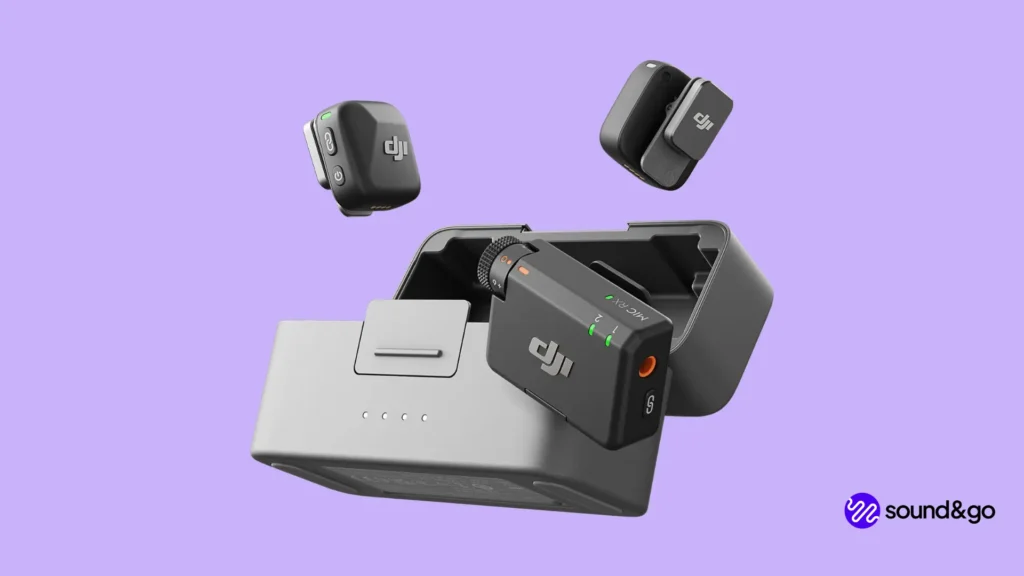
Røde Wireless Micro - Better than most Røde Wireless products
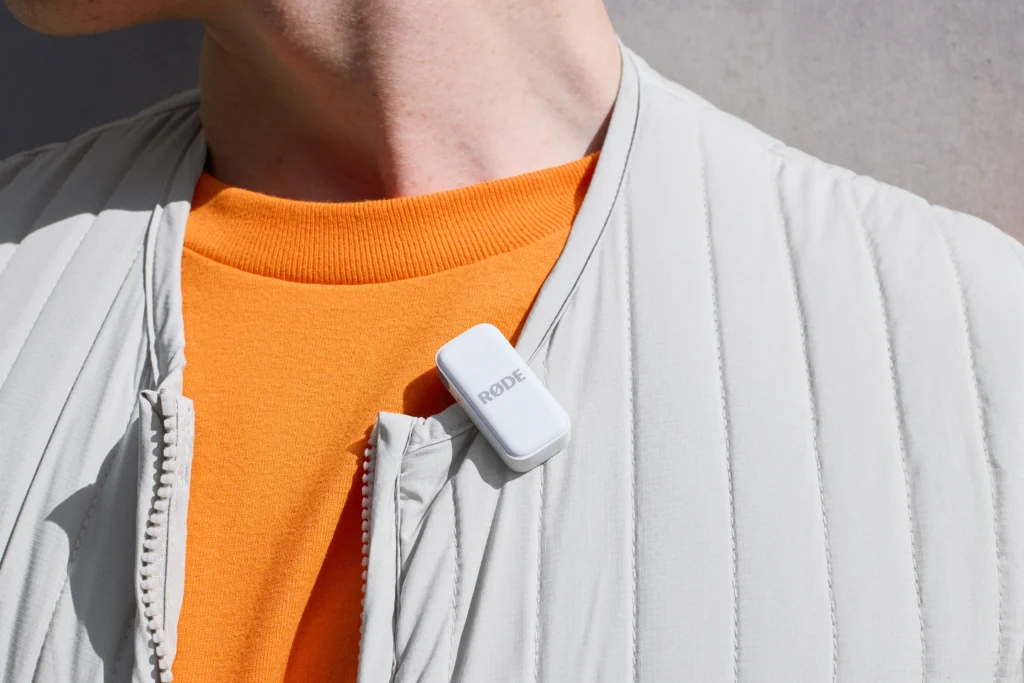
The Røde Wireless Micro is the first time that Røde has offered a complete package that performs really well. You get a charging case (which is not the case until the Wireless Pro for around $300), a smartphone receiver and small, subtle transmitters.
This is actually a good overall package for this manufacturer. As you would expect from Rode, the sound is still good. It is noticeable that the microphone sounds better in the hand in front of the mouth than on the collar.
The microphone is available for smartphones with USB-C and Lightning connection. Now, there’s a new camera adapter available, and you’ll get it for FREE if you buy or bought the Micro! All you have to do is register your wireless micro at account.rode.com and you’ll get it shipped over. We love that client focused support! This offer was only available until 30.10.2025, since the new Camera Kit will launch soon.
UPDATE: The Micro now supports Bluetooth connection to a smartphone without the use of the reciever.
★★★★★
As usual, it takes first place in the sound category. It sounds balanced and of high quality.
★★★★★
Rather mediocre, as you are limited to USB-C and Lightning. The new bluettoth connection is great
★★★★★
The Wireless Micro looks high-quality and modern, we have nothing to criticize about it
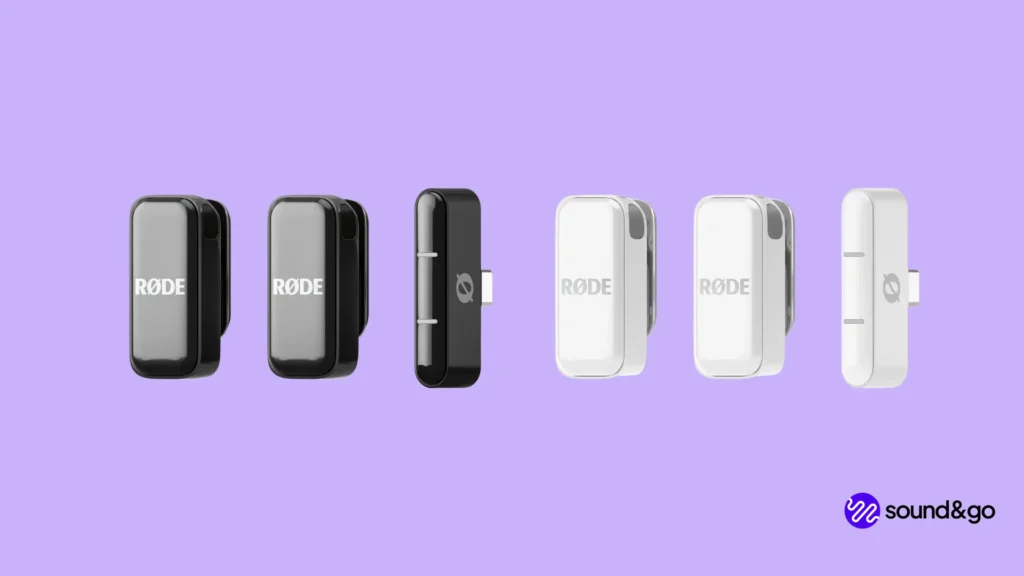
Fulaim X5M - Our surprise
The Fulaim X5 also has the classic two wireless microphones and a receiver plus case. Like the Hollyland, the case is rechargeable and convenient, as it is more or less a power bank. If you put the devices in the case, they charge directly and are easily stowed away. The difference to the C1 is that the devices sit better in the case and it also looks much more valuable.
The microphones were connected super quickly and you can connect the receiver directly to a USB-C or Lightning device using a mini adapter, which is practical. However, the construction with the adapter seems a little fragile, so you might want to get a cable adapter to prevent the receiver from breaking if you do get to it.
As with the Røde Wireless, you can connect a lavalier microphone to the transmitter and also connect the receiver to a camera via a 3.5mm jack, for example, to record the sound there. There is also an internal memory. The Fulaim therefore combines the fast connection of the C1 and the flexible connections of the Wireless ME. The Fulaim also has two transmitters.
For the price, this is our big surprise, as we didn’t expect much from this model. The Fulaim also performs well in terms of sound, although it doesn’t come close to the Røde, as the treble sounds a little exaggerated. You can judge the sound for yourself in the video above. Click here for our Fulaim X5 review.
★★★★★
Doesn't sound much worse than the Wireless Me, very balanced
★★★★★
Everything connects fast, there is also a model with internal recording
★★★★★☆
Good workmanship for the price and range of functions
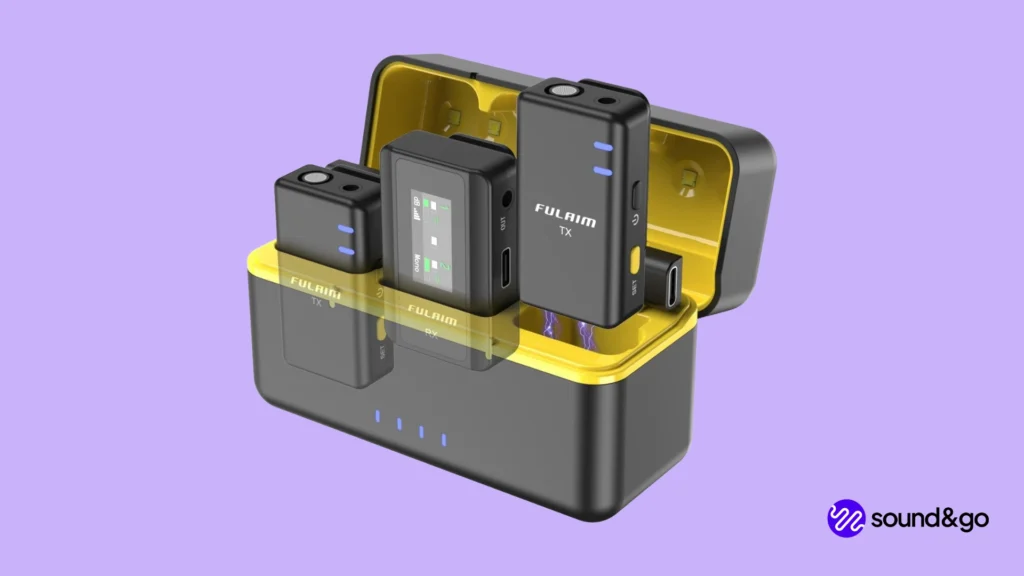
The best premium wireless microphones
Hollyland Lark Max 2 - Our surprise and recommendation!

The Hollyland Lark Max 2 surprised us right out of the box. The packaging looks high-quality, almost Apple-like. In addition to a charging case, you also get a sturdy bag that immediately inspires confidence and looks very durable. The version with direct monitoring is exciting, but we don’t recommend it because the headphones are not high-quality.
In addition to the impressive scope of delivery, the design is also convincing. The transmitters are extremely lightweight, high-quality and feel modern. They also offer features that you would otherwise only expect in a higher price range. You get AI noise reduction, 32-bit float recording directly in the transmitter, timecode sync, stable range with low latency and even the option of using up to four transmitters simultaneously. For around $300, the Lark Max 2 offers a lot of pro features in a compact system.
We were really impressed by the Hollyland Lark Max 2. Perhaps it’s also the winner of our hearts because it offers so many features that are really useful in practice, and at a fair price.
For this number of features and build quality, you sometimes have to pay more with other manufacturers. We also have a detailed Hollyland Lark Max 2 review.
★★★★★
Even the noise reduction sounds good, internal recording sounds very clean!
★★★★★
Very good and above all transparent. You get visual and haptic feedback when changing functions
★★★★☆
TThe workmanship is high quality and, above all, reasonable for the price. All cables and accessories have their place in the bag.
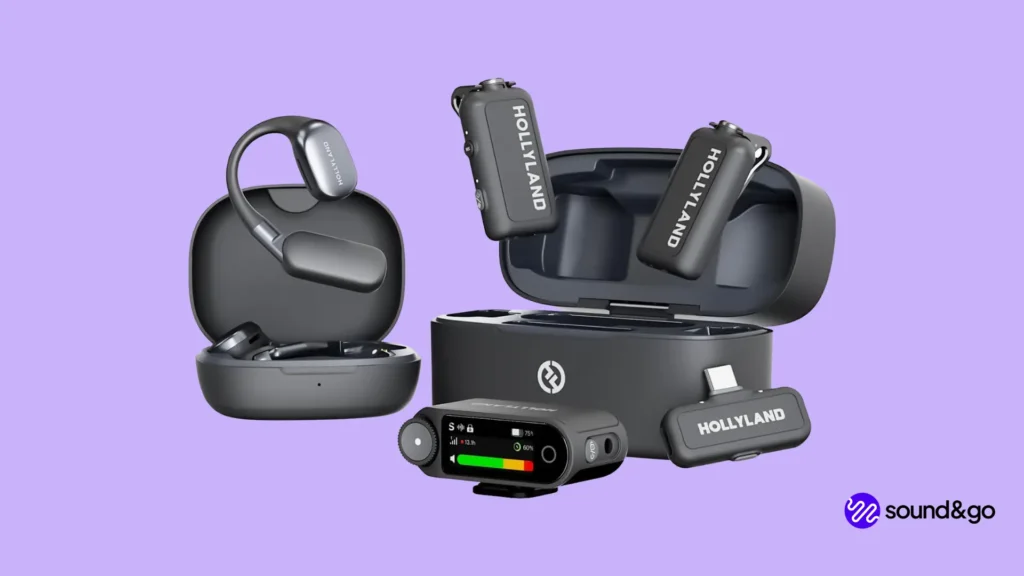
The "old" DJI MIC 2 - winner of the hearts DJI MIC 3 below
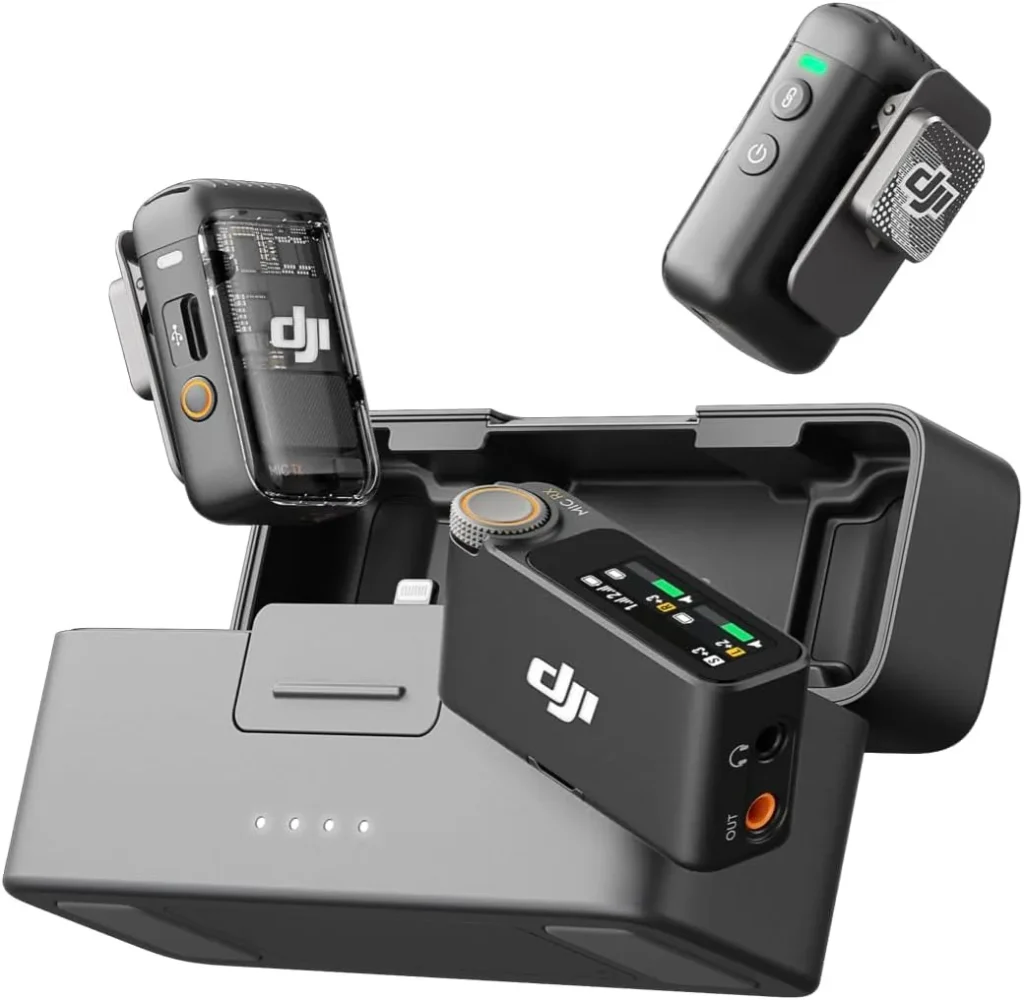
The DJI MIC 2 is logically the successor to the DJI MIC 1 and therefore an optimized version. With many of the new features, you get the feeling that usability has really come to the fore. As a significant change, not only has the display become larger, but the DJI can also record internally in 32bit float. So you can be sure that there will be no connection errors or clipping, a really good feature!
The workmanship of the charging case has also improved, it is the only one of the wireless microphones compared that is made of metal and only opens when you press the button. The workmanship and usability of the bag, which holds the charging case and accessories including cables and windscreen, is also really good. You have a small bag that you can put in before a shoot and you simply have everything with you.
The only downside we noticed was the small Lightning and USB-C adapters, which are plugged into the receiver with a small connector plate. Unfortunately, these adapters are not of such high quality and are a little fiddly to convert.
Overall, however, the DJI MIC 2 totally won us over technically (and admittedly also emotionally). An absolute recommendation! Click here for the DJI MIC 2 Review.
★★★★★
The sound of the DJI transmitters is high quality, the 32-bit float recordings ensure that you have good sound!
★★★★★
We had no problems connecting the DJI to the camera with existing cables or via Lightning and even Bluetooth
★★★★★
There is nothing wrong with the workmanship, especially the bag and the charging case are very well made and user-friendly
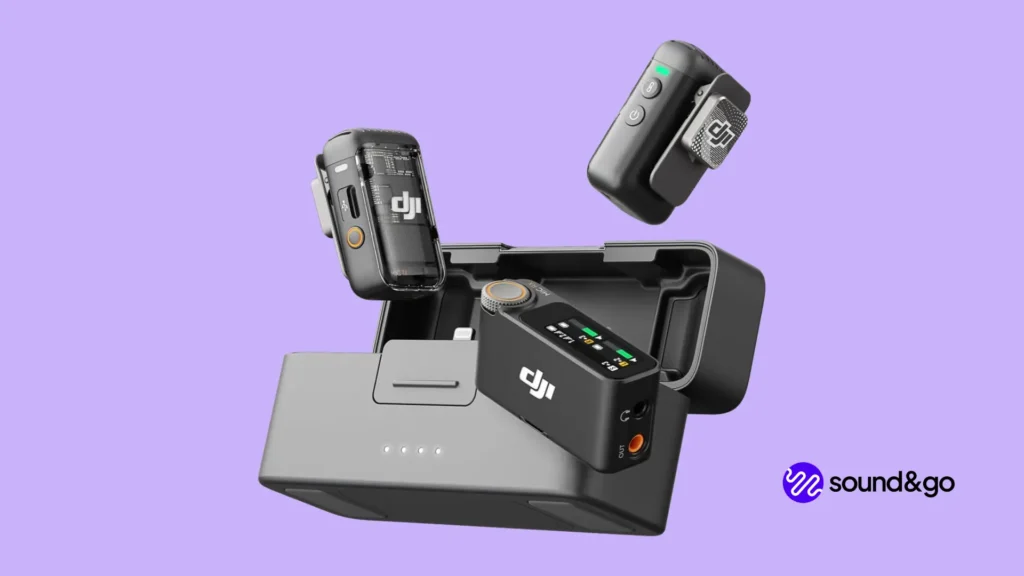
Rode Wireless PRO - Going professional
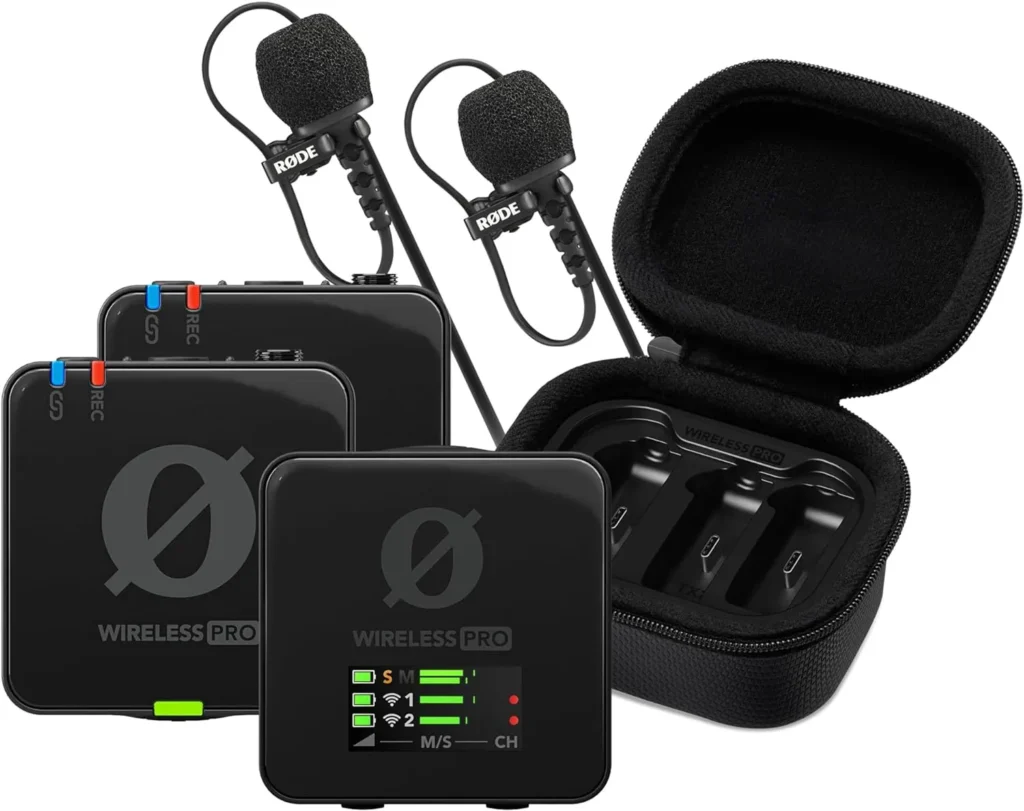
The Rode Wireless PRO is the more professional brother of the well-known Wireless GO and really packs a punch! The scope of delivery is absolutely impressive compared to the Sony, because you not only get two cases, but also all the necessary cables (USB-C to USB-C, USB-C to Lightning, TRRS), but also two lavalier microphones (Lavalier II from Rode) if the transmitter is a bit too big for you. Rode wins more than just one point here, that’s great!
Two cases? Exactly! A charging case with battery for transmitter and receiver and a case for accessories such as windscreens, lavalier microphones, etc. This can be practical, but DJI has also found a good solution for Mic 2: A bag in which the charging case and accessories fit, so you only have to think about a bag.
The Wireless Pro can record 40(!) hours in 32-bit float internally, which is more than enough. It is also the only device that is timecode compatible, which makes synchronizing audio and video a breeze! Click here for our Røde Wireless Pro Review.
★★★★★
The transmitters sound very clean, the lavalier microphones sound professional
★★★★★
Internal recording, the case is recognized as a data carrier. The only disadvantage is that you need the Rode software
★★★★★
High-quality workmanship, protective case, good scope of delivery
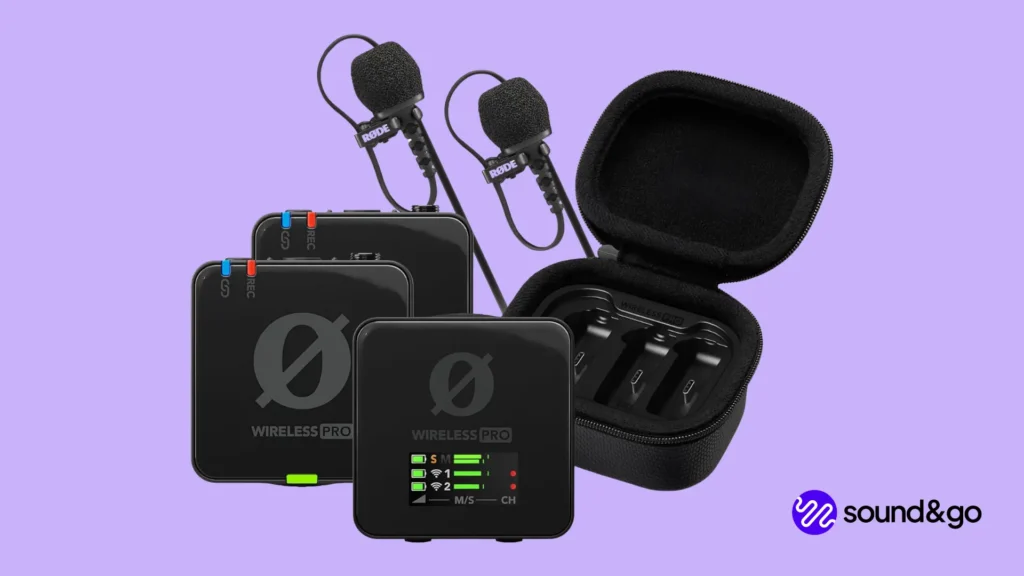
DJI Mic 3: What a bummer..
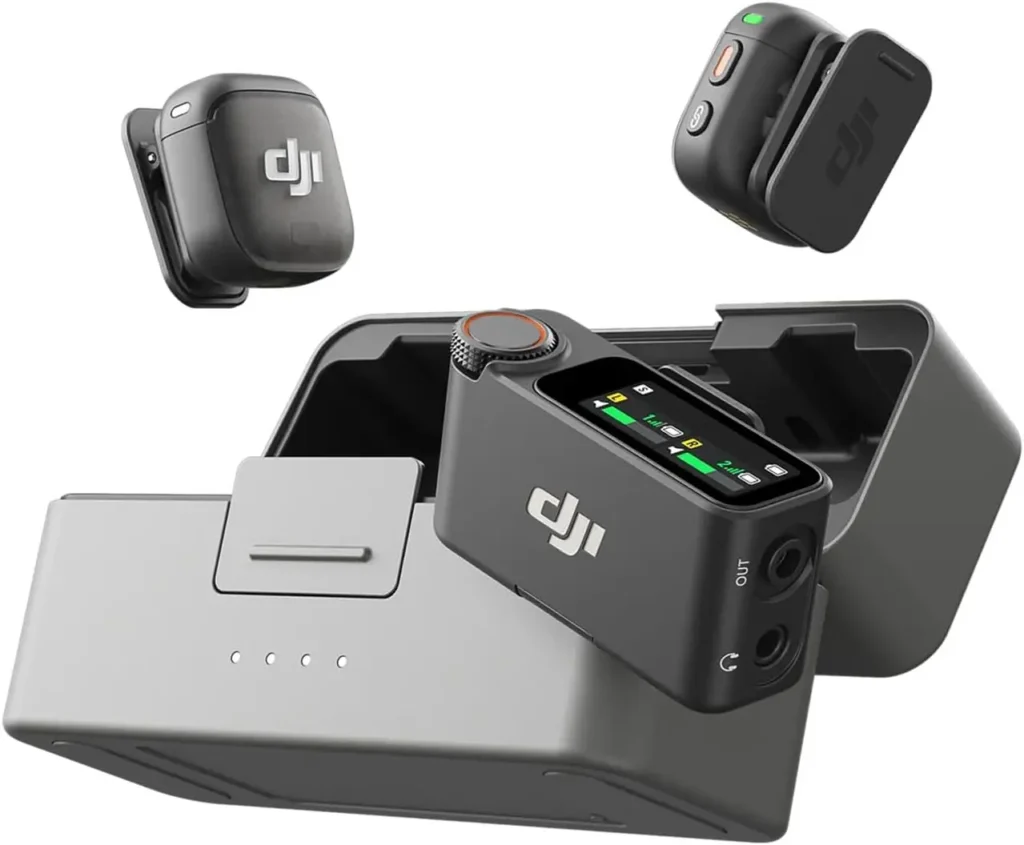
Even though we tend to recommend the DJI Mic 2 above, the Mic 3 naturally has its target audience. If you never use external microphones anyway and swear by timecode to synchronize your recordings with just a few clicks, then you may have found your solution here. Because, let’s face it, it sounds very good and is really compact. With its mini size, internal recording, 32-bit float, and very good noise canceling, it definitely deserves its place on this list. Nevertheless, we still feel that the omission of the 3.5mm input for external lavalier microphones is a real shame.
★★★★★
As usual, the sound quality of the DJI transmitters is excellent, with 32-bit float recordings and noise canceling ensuring great sound!
★★★★★
No connection option for microphones and an extra adapter for $19 for a product costing around $300 means points deducted!
★★★★★
The workmanship is top-notch, the case is well designed, and it's super easy to use.
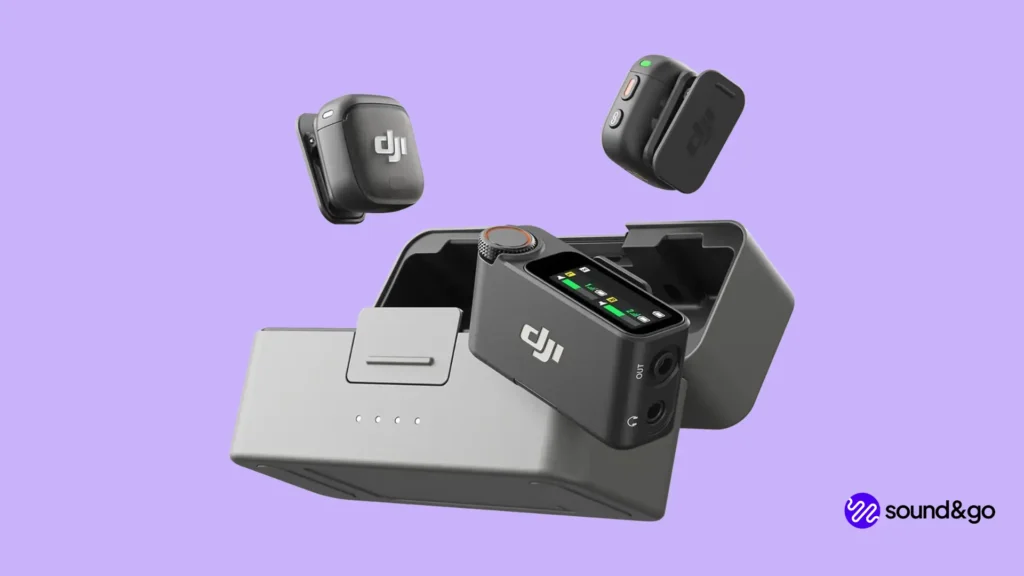
Are you missing a microphone?
Of course, we can’t test every single wireless microphone. If you are convinced that the model you are using is better than a 1st place in the category, please send us an email to info@soundandgo.com. We’ll be happy to take a look 🙂
FAQs
Which wireless microphone is the best?
That depends on your needs, of course. In short, you could say: Boyamini as a budget solution, DJI Mic Mini as a small solution, and Røde Wireless Pro as a premium solution.
How important is the transmission distance for wireless microphones?
If you don’t shoot much outdoors, then this factor is pretty irrelevant. Let’s be honest: how often are you 50 or even 150 meters away from your camera or smartphone? Very rarely. In addition, most models offer internal recording, which is definitely less prone to dropouts.
My microphone is making noise. How can I prevent this?
Take a look at our article: Removing background noise from microphones. Here we look at how you can prevent and remove noise and other interference.
Can I also purchase or use the microphone separately?
Many microphones, such as the DJI Mic Mini or DJI Mic 2, can also be purchased separately. This works just as well, and you can continue to use the existing functions. Without a transmitter, you may only be able to use internal or Bluetooth recording.
Why are the prices not up to date?
There are new offers and price changes every day. Since we want to focus on improving your sound, we provide you with an overview of the prices, but not an exact, up-to-date figure, as this would be too much effort for us as a relatively small blog.
Do you use affiliate links?
Yes, we currently use affiliate links. Nevertheless, we evaluate the products 100% honestly, and in some cases, you even receive discounts. We will not recommend products just because we can earn more money from them. Likewise, we will not omit any recommendations just because they cannot be found at any affiliate partner. For product categories, we refer to Thomann, as Thomann is the most popular portal in this area. You can find out more about this on the Our Partners page.
Conclusion: Wireless microphones - better audio recordings simply, quickly and wirelessly
We are surprised that the Fulaim X5 could offer such a good performance! The Rode Wireless Me retains first place in terms of sound, in the future we will also test the other Rode models including alternatives!
We were also surprised by the Lark Max, which can deliver a really good overall package. In our test we were completely satisfied, good accessories, good functions. The sound is also really good.
In the expensive segment, the decision is clear on the one hand, as the Sony virtually disqualifies itself due to its price-performance ratio. DJI Mic 2 and Røde Wireless Pro are in a neck-and-neck race, with the Røde winning in terms of accessories and professionalism. The DJI is more consumer-focused and can be operated more intuitively.
If you’re also looking for wired alternatives, we also compare interview microphones. Can’t get enough? Check out our comparison of podcast microphones! For clean sound recordings, check this out: how to remove microphone background noise.
Links marked with * are affiliate links. There are no additional costs for you, some of these links are with an automatic discount for you. We mark these links for transparency and would never recommend bad products. Find out more here: Our partners.

